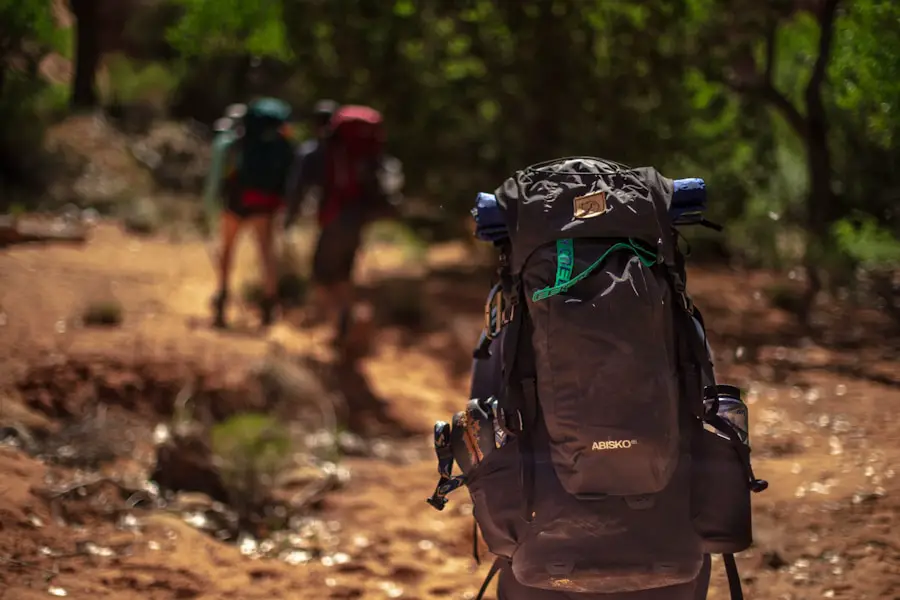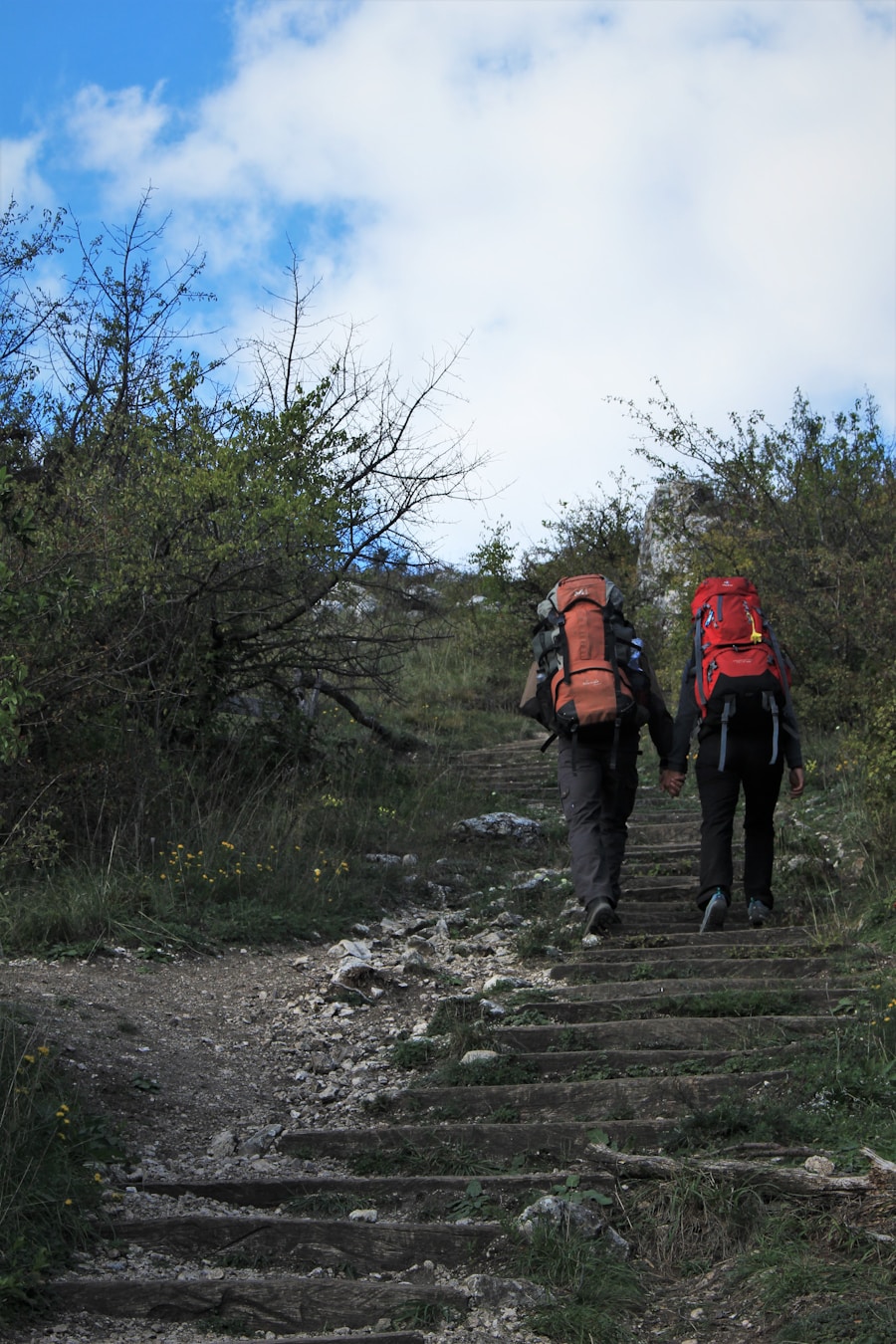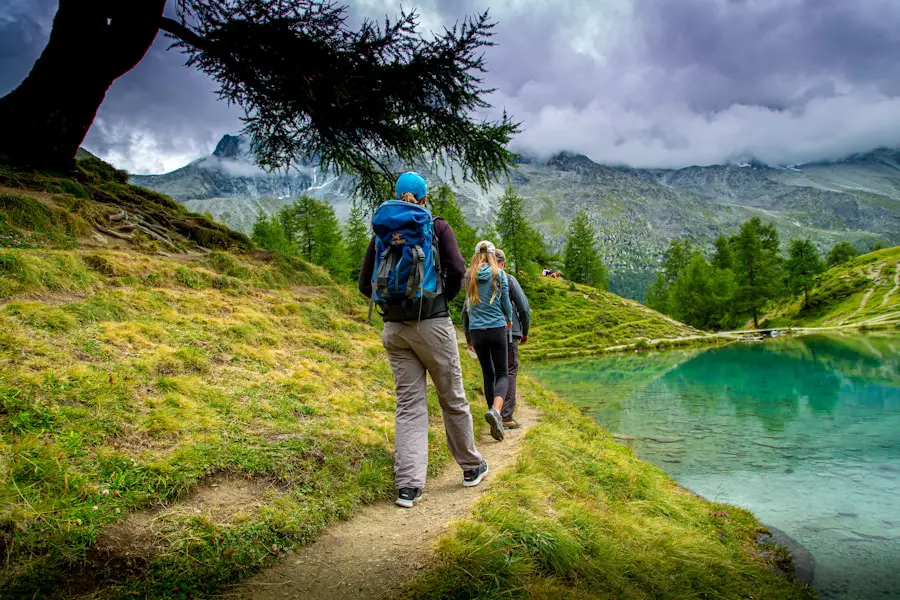Hiking and trekking are often used interchangeably, yet they embody distinct experiences that cater to different preferences and skill levels. Hiking typically refers to walking on well-marked trails or paths, often in natural environments such as parks, forests, or mountains. It is generally characterized by shorter distances and less challenging terrain, making it accessible to a broader audience.
Hikers can enjoy a leisurely stroll or a more vigorous walk, depending on the trail’s difficulty and their personal fitness levels. The essence of hiking lies in its simplicity; it invites individuals to connect with nature without requiring extensive preparation or specialized skills. In contrast, trekking is a more demanding endeavor that usually involves multi-day journeys through rugged landscapes.
Trekkers often navigate unmarked paths, requiring a higher level of endurance and self-sufficiency. This activity is frequently associated with remote areas where access to amenities is limited, necessitating careful planning and preparation. Trekking can involve significant elevation changes, unpredictable weather conditions, and the need for camping equipment.
As such, it appeals to those seeking adventure and a deeper immersion in the wilderness. While both activities promote an appreciation for nature, trekking often embodies a spirit of exploration and challenge that sets it apart from the more casual experience of hiking.
Key Takeaways
- Hiking and trekking involve walking in natural environments, but trekking typically refers to longer, more challenging journeys.
- Hiking and trekking require physical fitness, endurance, and strength, as well as the ability to navigate uneven terrain and varying weather conditions.
- Essential equipment for hiking and trekking includes proper footwear, clothing, backpack, navigation tools, and first aid supplies.
- The terrain and duration of hiking and trekking can vary greatly, from short day hikes on well-maintained trails to multi-day treks through remote wilderness areas.
- Hiking and trekking can have both positive and negative environmental impacts, so it’s important to practice Leave No Trace principles and minimize your footprint.
The Physical Demands of Hiking and Trekking
Preparing for the Hike
Hikers must be prepared for changes in pace and intensity, as well as the potential for fatigue over longer distances. Proper conditioning can enhance the hiking experience, allowing individuals to enjoy the journey without succumbing to exhaustion. Trekking, on the other hand, demands a higher level of physical fitness and mental resilience.
The Challenges of Trekking
Trekkers often face prolonged periods of walking over several days, which can lead to muscle fatigue and joint strain. The need to carry a backpack filled with essential gear adds an additional layer of physical challenge. Trekkers must also contend with varying altitudes, which can affect oxygen levels and lead to altitude sickness if not managed properly.
Training for Trekking
Training for trekking typically involves building endurance through long-distance walks or hikes, strength training to support the body during strenuous climbs, and flexibility exercises to prevent injuries. The combination of these physical demands makes trekking a more rigorous pursuit that requires commitment and preparation.
The Equipment Needed for Hiking and Trekking

The equipment required for hiking is generally less extensive than that needed for trekking, reflecting the differences in duration and intensity between the two activities. For a day hike, essential gear typically includes sturdy footwear designed for traction and support, such as hiking boots or trail shoes. Comfortable clothing made from moisture-wicking materials is also crucial to regulate body temperature and prevent chafing.
A daypack is often used to carry water, snacks, a first-aid kit, and navigation tools like maps or GPS devices. Depending on the season and location, additional items such as hats, sunglasses, or rain gear may be necessary to ensure comfort and safety. In contrast, trekking requires a more comprehensive array of equipment due to its extended duration and unpredictable conditions.
Trekkers must invest in high-quality gear that can withstand harsh environments while providing comfort over long periods. This includes durable backpacks with adequate capacity for multi-day supplies, sleeping bags suitable for varying temperatures, and tents designed for easy setup and weather resistance. Cooking equipment becomes essential for preparing meals on the trail, along with portable water filtration systems to ensure safe drinking water.
Clothing layers are critical for adapting to changing weather conditions, while trekking poles can provide stability on uneven terrain. The investment in proper equipment not only enhances safety but also contributes to an enjoyable trekking experience.
The Terrain and Duration of Hiking and Trekking
| Terrain | Duration |
|---|---|
| Flat terrain | 1-2 hours |
| Rolling terrain | 2-3 hours |
| Hilly terrain | 3-4 hours |
| Mountainous terrain | 4-6 hours |
Hiking trails can be found in diverse environments ranging from urban parks to mountainous regions. The terrain may include flat paths suitable for beginners or more challenging routes featuring steep inclines and rocky surfaces that test even experienced hikers. The duration of hikes can vary significantly; some may last only a couple of hours while others extend into full-day excursions.
Many popular hiking destinations offer loop trails that allow hikers to return to their starting point without retracing their steps, adding variety to the experience. Trekking typically involves traversing more remote and rugged landscapes over extended periods. Treks can last anywhere from two days to several weeks, depending on the chosen route and destination.
The terrain trekkers encounter often includes high-altitude passes, dense forests, river crossings, and alpine meadows. These environments present unique challenges such as altitude acclimatization and navigation through unmarked paths. Trekkers must be prepared for varying weather conditions that can change rapidly in mountainous regions, necessitating flexibility in their plans.
The duration of treks requires careful planning regarding food supplies, rest breaks, and campsite selection to ensure a safe and enjoyable journey.
The Environmental Impact of Hiking and Trekking
Both hiking and trekking have environmental implications that warrant consideration from outdoor enthusiasts. Hiking trails can become eroded over time due to foot traffic, particularly in popular areas where large numbers of visitors converge. This erosion can lead to habitat destruction for local flora and fauna as well as increased sedimentation in nearby water bodies.
To mitigate these impacts, many parks implement measures such as trail maintenance programs and designated pathways that help preserve natural ecosystems while allowing public access. Trekking often occurs in more fragile environments where the potential for environmental degradation is heightened due to limited infrastructure and resources. Trekkers may leave behind waste or disturb wildlife if not properly educated about Leave No Trace principles.
The impact of trekking can be exacerbated by the use of camping equipment that may not be environmentally friendly or by the collection of firewood from local areas. Responsible trekking practices emphasize minimizing human footprints by adhering to established routes, carrying out all waste, and respecting wildlife habitats. By fostering awareness of these issues, trekkers can contribute positively to the preservation of natural landscapes.
The Health Benefits of Hiking and Trekking

Engaging in hiking offers numerous health benefits that extend beyond physical fitness. Regular hiking can improve cardiovascular health by enhancing heart function and increasing lung capacity through aerobic exercise. It also promotes weight management by burning calories while providing an opportunity for individuals to disconnect from daily stressors and engage with nature—a factor known to reduce anxiety and improve mental well-being.
Studies have shown that spending time outdoors can elevate mood levels due to exposure to sunlight and fresh air, which contribute to increased serotonin production. Trekking amplifies these health benefits due to its more intense physical demands over extended periods. The combination of endurance training and exposure to diverse terrains enhances muscle strength and flexibility while improving balance and coordination.
Additionally, trekking often involves navigating challenging landscapes that require mental focus and problem-solving skills—benefits that extend beyond physical health into cognitive development. The social aspect of trekking—often undertaken in groups—can foster camaraderie among participants, further enhancing emotional health through shared experiences in nature.
The Cultural and Social Aspects of Hiking and Trekking
Hiking has long been a popular recreational activity that fosters community engagement through organized events such as group hikes or trail clean-up days. Many hiking clubs exist worldwide, bringing together individuals who share a passion for exploring nature while promoting environmental stewardship. These clubs often organize outings that cater to various skill levels, encouraging newcomers to participate while providing opportunities for seasoned hikers to share their knowledge.
Trekking often embodies cultural significance as it frequently takes place in regions rich with history or indigenous traditions. For instance, treks along ancient trade routes or pilgrimage paths allow participants to connect with local cultures while experiencing breathtaking landscapes. In many cases, trekkers engage with local communities through homestays or guided tours led by indigenous people who share their customs and stories.
This interaction fosters mutual respect between trekkers and local populations while promoting sustainable tourism practices that benefit both parties.
Choosing Between Hiking and Trekking: Which is Right for You?
Deciding between hiking and trekking ultimately depends on individual preferences, fitness levels, and desired experiences in nature. For those seeking a casual outing with family or friends without extensive preparation or commitment, hiking presents an ideal option. It allows individuals to enjoy the beauty of nature at their own pace while accommodating varying skill levels within a group setting.
Conversely, if you are drawn to adventure and are willing to invest time in training and preparation for a more challenging experience, trekking may be the right choice for you. It offers an opportunity for personal growth through overcoming physical challenges while immersing oneself in remote landscapes rich with cultural significance. Ultimately, both activities provide unique ways to connect with nature; understanding your own goals will help guide your decision between these two rewarding pursuits.
If you are interested in exploring the great outdoors, you may want to consider the difference between hiking and trekking. Hiking is typically a shorter, less intense activity that can be done in a day, while trekking involves longer, multi-day journeys through challenging terrain. For more information on the best time to travel to Norway, check out this seasonal guide that will help you plan your adventure in this beautiful country.
FAQs
What is the difference between hiking and trekking?
Hiking and trekking are both forms of walking, but they differ in terms of the terrain, duration, and level of difficulty. Hiking is generally a shorter, less strenuous activity that takes place on well-marked trails, while trekking involves longer journeys over more challenging terrain.
What are the typical terrains for hiking and trekking?
Hiking is often done on established trails in parks, forests, and mountains, while trekking usually involves more remote and rugged terrain, such as mountains, deserts, or jungles.
How long do hiking and trekking trips typically last?
Hiking trips are usually shorter, ranging from a few hours to a full day, while trekking trips can last for several days or even weeks, requiring overnight camping or stays in remote lodges.
What kind of gear is needed for hiking and trekking?
For hiking, comfortable walking shoes, water, and a daypack are usually sufficient. For trekking, more specialized gear such as trekking poles, sturdy hiking boots, and camping equipment may be necessary.
What is the level of difficulty for hiking and trekking?
Hiking is generally considered to be a moderate activity, suitable for people of various fitness levels. Trekking, on the other hand, can be more physically demanding and may require a higher level of fitness and endurance.
